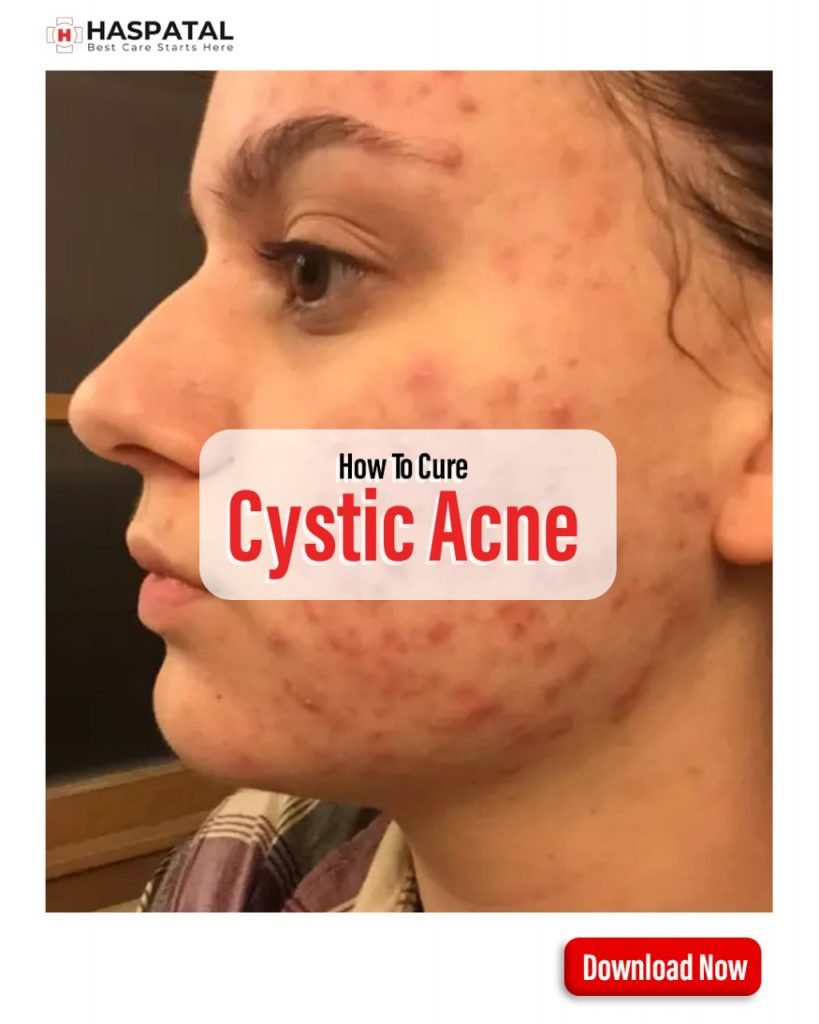How do you get rid of cystic acne on your chin?
Cystic acne is a type of seditious acne that causes painful, pus- filled pustules to grow deep beneath the skin. Acne develops when canvas and dead skin cells clog skin pores.
Chin pimples are quite prevalent. If you’ve aware of facial mapping, you’re probably aware that pimples on different parts of your face can have distinct reasons.
Acne on the chin or jawline may change with your monthly cycle. Some women have higher levels of androgen production than others. Increased androgen production can be caused by a disease such as polycystic ovarian syndrome (PCOS).
Bacteria enters the pores in cystic acne, causing swelling or inflammation. Cystic acne is the most severe kind of acne. Acne excrescencies are constantly uncomfortable and are more prone to beget scarring.
What are the causes of Cystic acne?
Aetiology of cystic acne:Excess canvas and dead skin cells can clog pores in the skin, leading to pustules. Bacteria can enter skin pores and come wedged alongside canvas and skin cells. The skin response involves profound swelling in the middle subcaste of the skin (the dermis). Acne excrescencies are inflamed, red, and blown lumps.
Some of the causes of cystic acne are as follows
- Time( teenagers are more prone to cystic acne).
- Cystic acne runs in my family.
- Hormone oscillations during nonage and, in some cases, menopause, as well as stress.
What are the home remedies for cystic acne?
These are some of the home remedies which you can conclude for cystic acne on your chins :
- Every night before going to bed, take off your makeup. To offset figure-up under the skin, consider products labelled non-comedogenic or canvas-free.
- Take into account your eating habits. A low-glycemic diet has been shown to prop with acne. Sugar and other high-glycemic foods, similar as white chuck, potatoes, and pasta, may be salutary.
- Harsh diminutives can irritate and dry up your skin indeed more, leading to an increase in canvas product as your skin attempts to compensate for what was lost. You should use a light cleaner to wash your face at least once a day, before going to bed.
- To make a paste, crush an aspirin lozenge and mix it with water. Aspirin, a relative of salicylic acid, may prop to reduce inflammation and pain.
- Adulterated white ginger is an important antibiotic that can help destroy acne origins.
- Curcumin, which is plant in turmeric, is a proven anti-inflammatory. It also has strong antiseptic goods. When you apply turmeric to cystic acne, it may have ananti-inflammatory impact, reducing the greenishness and size of the papule.
Still, it’s time to consult a dermatologist, If home remedies are not working to treat your cystic acne flare-ups. A dermatologist can define medicines that are more potent than what’s available untoward or at home.
What are the cystic acne treatments?
A dermatologist may recommend the following treatments depending on the cause of your acne flare-ups
- Antibiotics are used to treat infections and reduce inflammation.
- To treat severe cases, isotretinoin is used.
- Spironolactone is used to control canvas product.
- Steroid injections are given directly into excrescencies to palliate inflammation and pain.
[contact-form-main]

